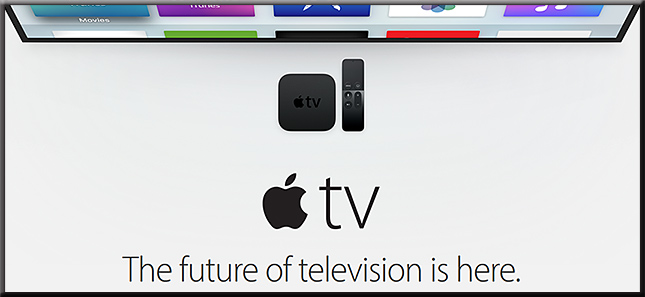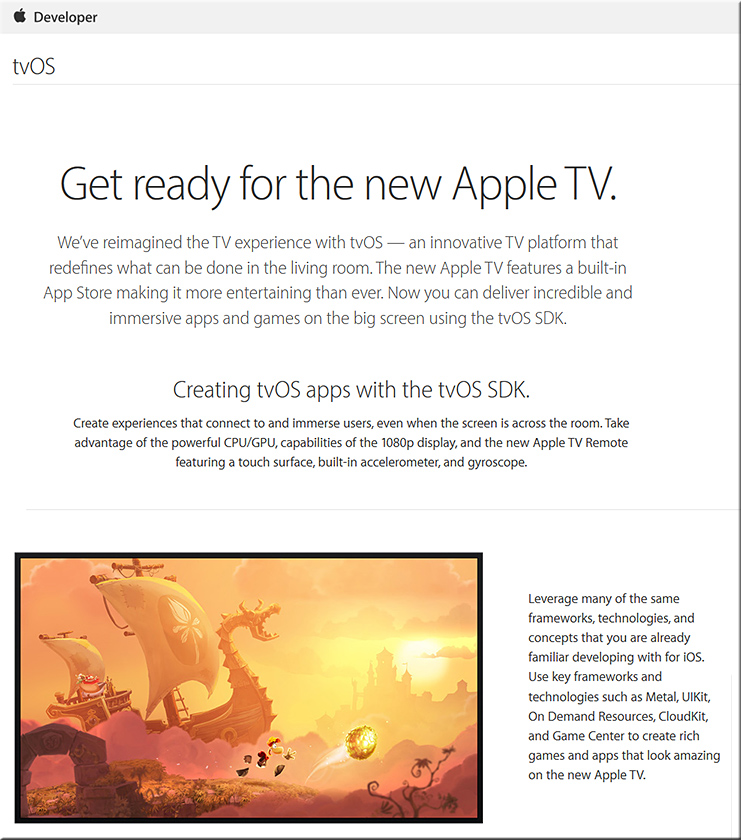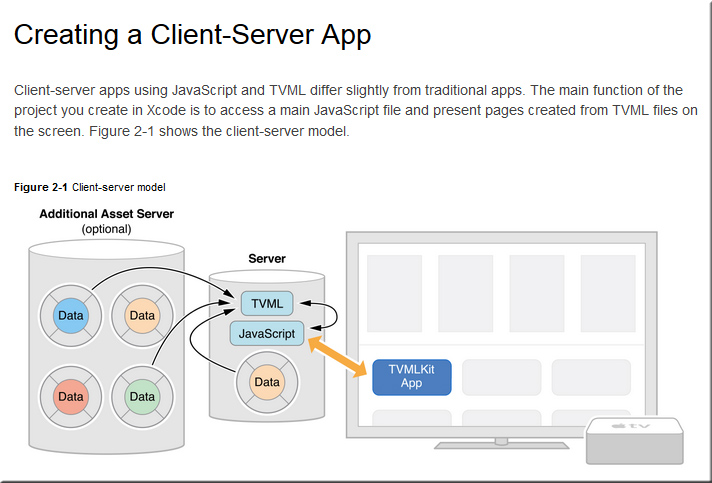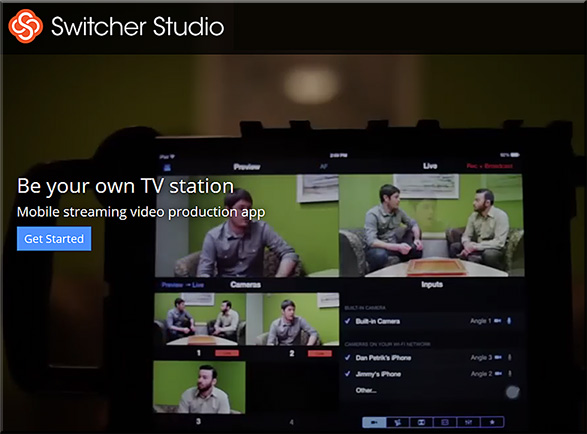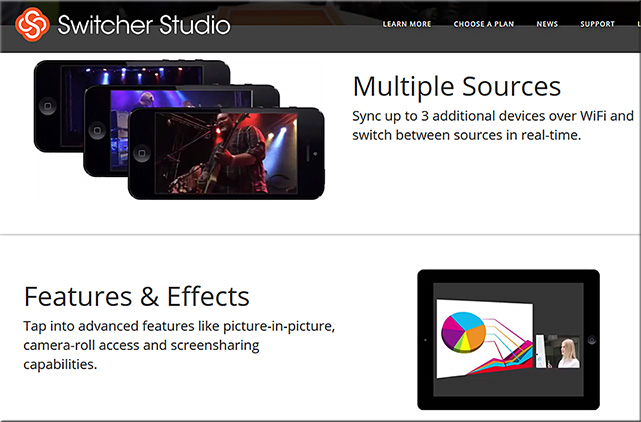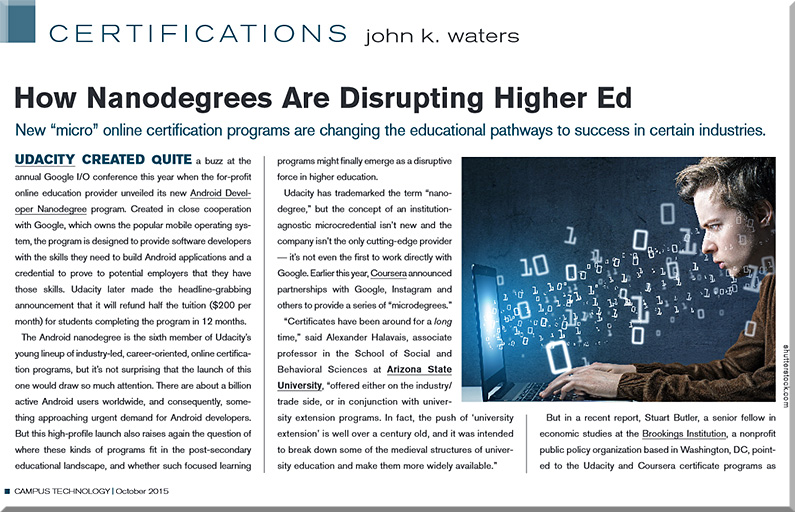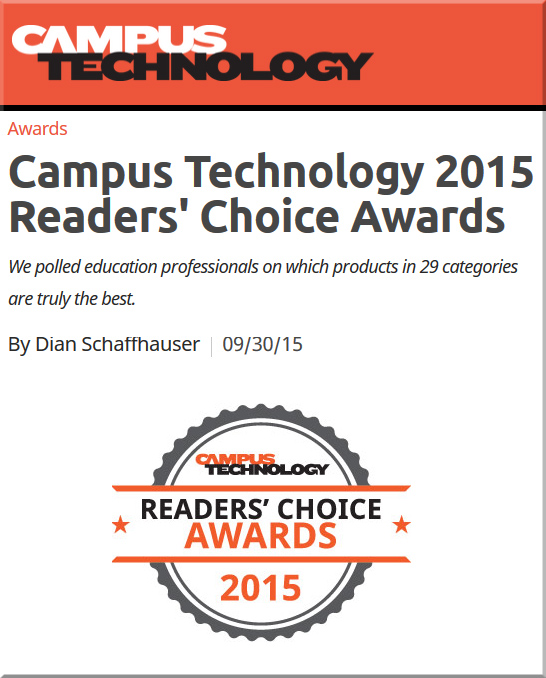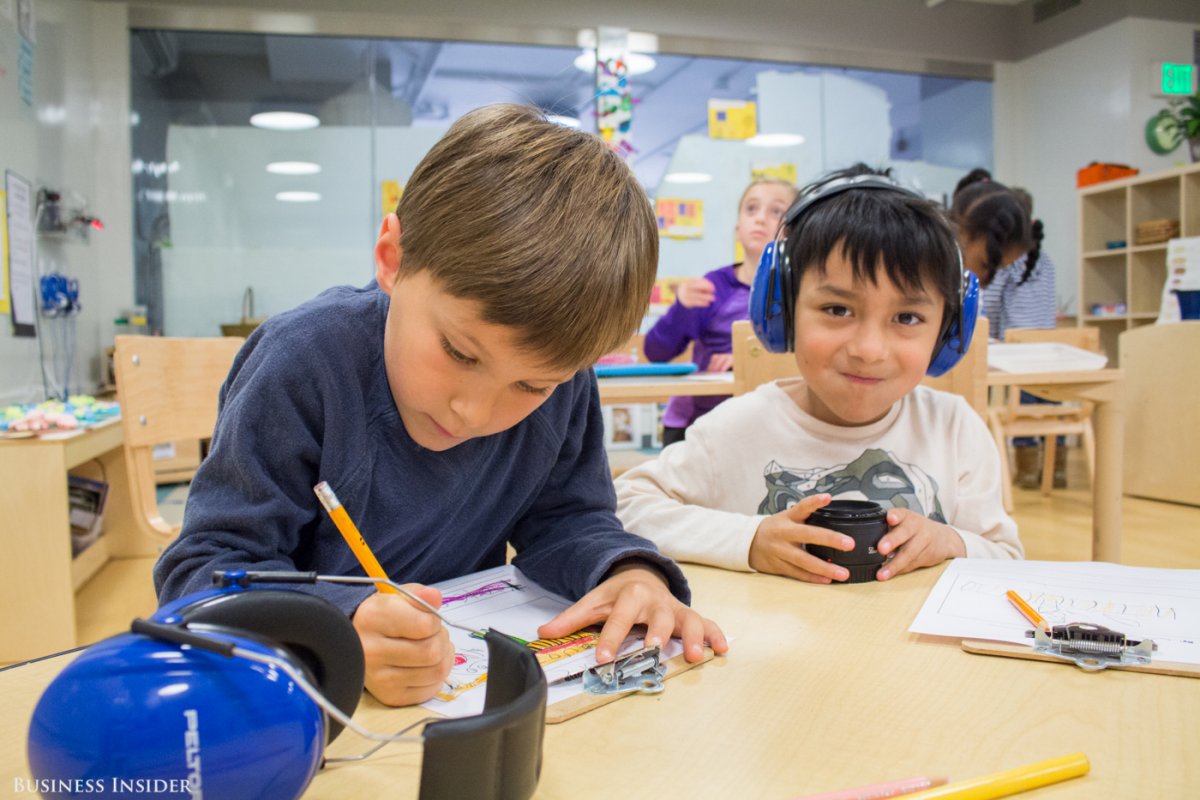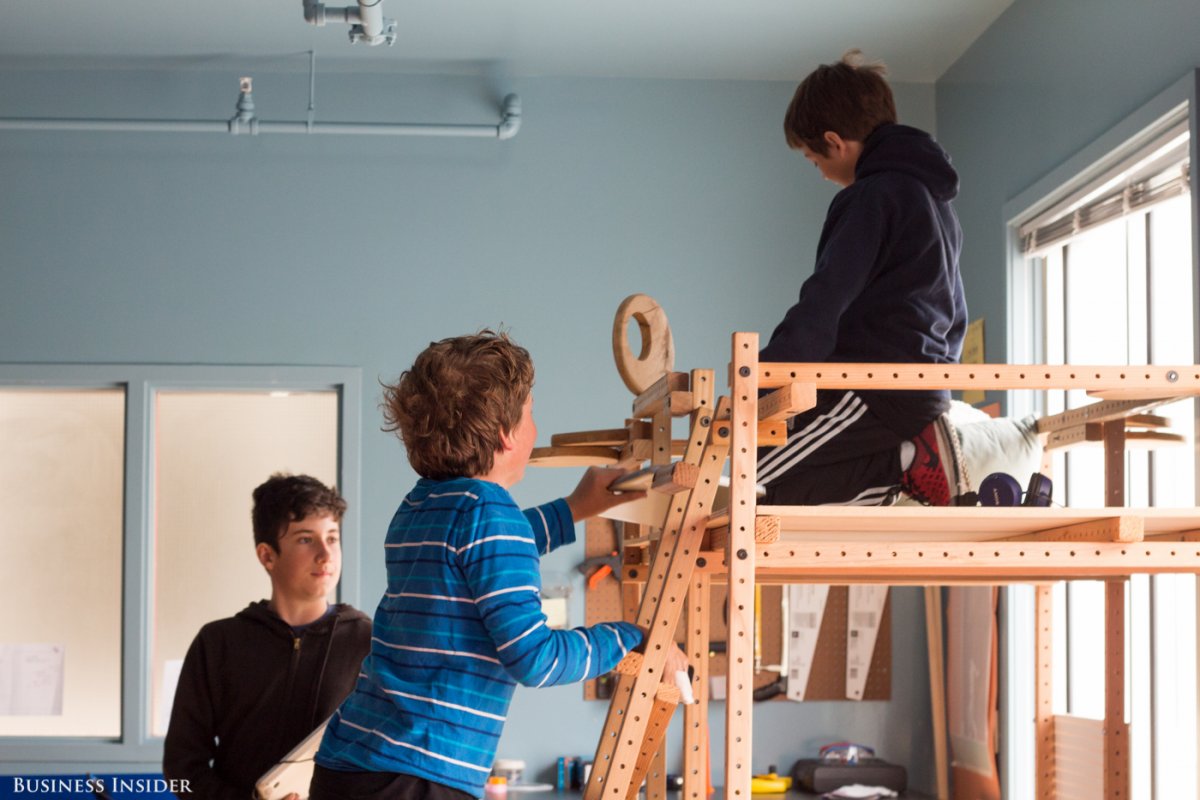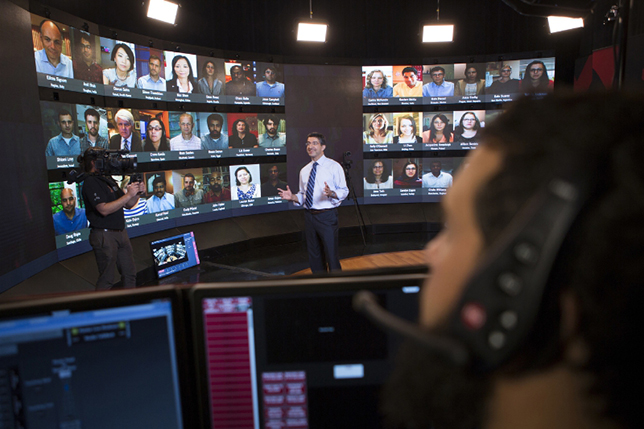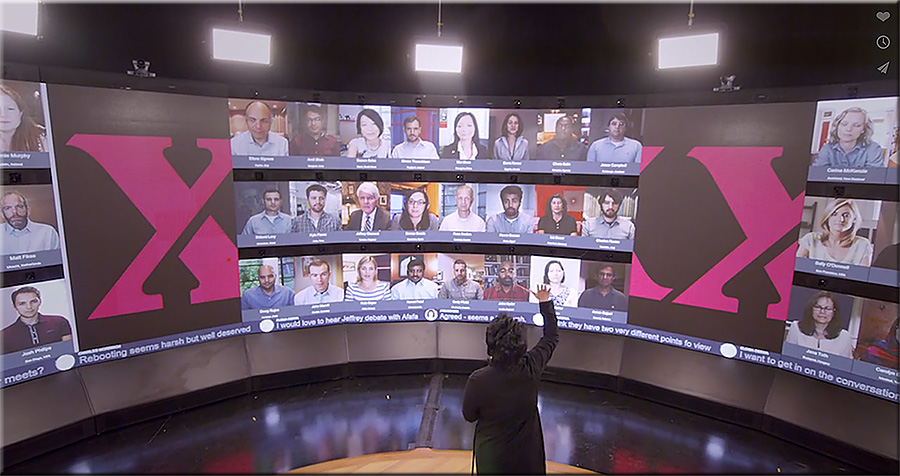The future of education demands more questions, not answers — from edsurge.com by Jay Silver; with thanks to EDTECH@UTRGV for their Scoop on this resource
Excerpts (emphasis DSC):
Technology alone can’t educate students. It’s not some mystical, magical ingredient one sprinkles over core curricula like salt on a meal. The magic is inside the child.
…
A Pedagogy of Answers
Too many schools apply a paint-by-numbers approach to tech: “Let’s cover this fixed information, in this exact way, in this set amount of time, and judge ourselves as educators and students based on standardized test results.”
…
A Pedagogy of Questions
Our national teaching model has for too long been a pedagogy of answers. In its place I’d like to suggest a new pedagogy of questions—one that prizes interest-driven, project-based, exploratory studies. Personal gardens of learning with no single pathway through them. More open play and less rote memorization. More learning by discovery than following set instructions.
…
As an inventor and father, my advice to those looking to make digital in-roads into our nation’s schools is this: promote learning that encourages kids to choose their own problems and solutions rather than a single, siloed system.
…
Tech isn’t the answer, but it can help us create a new pedagogy of questions.
From DSC:
I can relate to Jay’s thoughts and perspectives here — we need to provide our young learners with more choice, more control. More play. More time for experimentation. More project-based learning that’s based upon what students want to learn about.
How many parents wouldn’t give their left leg (well…almost) to hear their kids say, “I can’t wait to go to school — I love going to school! I love learning about new things that I want to know about!”? To see such excitement, engagement, and a love for learning would be mind-blowing, right? If your son or daughter has that perspective, I’d guess that you value that attitude and that learning situation a great deal.
This morning a faculty member said something that’s relevant here. [Paraphrasing what he said:] “There’s a paradigm shift occurring these days in how to get information. We need our students to understand and react to this paradigm shift and we need to help them make that shift. They need to be more proactive in how they get information; and not go along with the “Feed me! Feed me!” approach.”
A final comment here…my kids balk at having to learn so many things that they have little interest in; it’s force-fed learning surrounded by — and shaped by — standardized tests. The list of things they actually want to learn about is either very short or non-existent (depending upon their grade levels). I understand that they are at different stages in their ability to make judgments about what they need to learn about; they need foundational skills to build upon…and that they don’t know what they don’t know. That said, it would be an interesting experiment for each of them indeed, for them to be able to self-select/choose some more topics, projects, and assignments and then pursue them on their own or with other small groups of other students. How might that impact their engagement levels? How might that improve their views of learning? Perhaps I’m off here..and too Hallmarkish, too Pollyannaish; but I’m tired of hearing the moaning and groaning again about having to do this or that piece of homework.
————–
Addendums on 9/16/15:
I just ran across this item from Larry Ferlazzo out at edutopia.org that has a section in it — Autonomy — that addresses ways that more choice, more control can be introduced.
The idea of asking better questions doesn’t just belong in K-12. Check out Jack Uldrich’s posting, A Framework for Questioning the Future.
Excerpt:
In today’s era of accelerating change, “answers” about the future are becoming more scarce. As a result, a premium is being placed on asking better questions about the future.
Unfortunately, because most business leaders, CEO’s and senior executives view themselves as action-oriented “problem-solvers,” they have a bias for “answers” instead of “questions.” As such, they don’t really know how to ask better questions.
In an effort to help individuals and organizations overcome this bias–and in the firm belief that it is better to have an imprecise answer to the right question than an exact answer to the wrong question,–I have put together a simple framework to help companies, businesses and organizations begin asking better questions about the future.
The eleven questions posted below are design to jumpstart the thinking–and questioning–process:












![The Living [Class] Room -- by Daniel Christian -- July 2012 -- a second device used in conjunction with a Smart/Connected TV](http://danielschristian.com/learning-ecosystems/wp-content/uploads/2012/07/The-Living-Class-Room-Daniel-S-Christian-July-2012.jpg)


